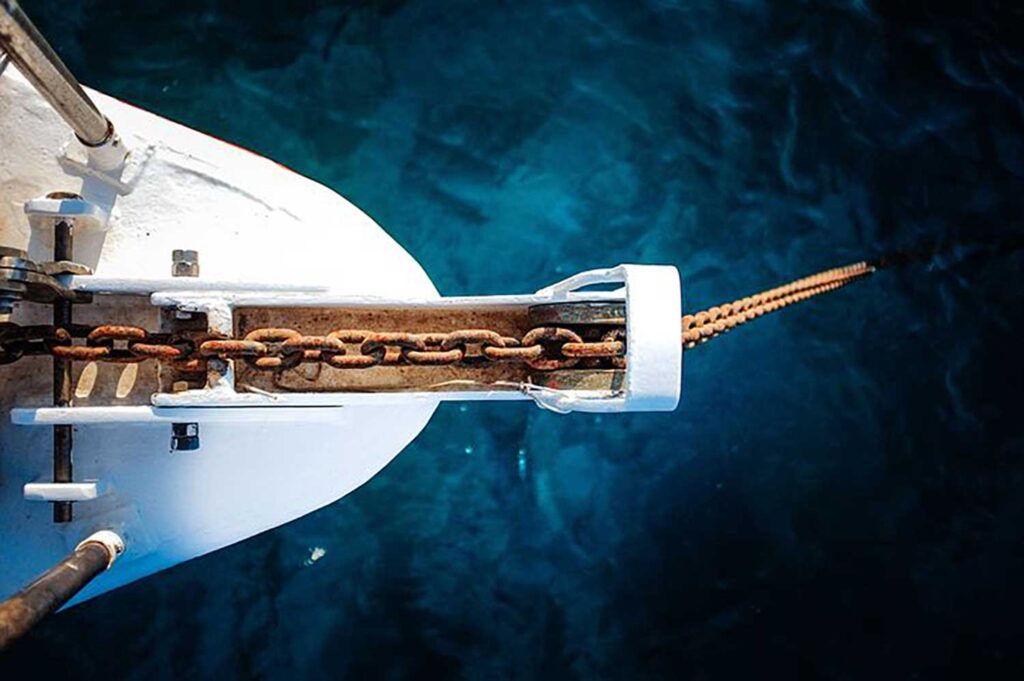Nigel Guild’s father was a medical officer in the Royal Navy and the service felt like a natural extension to the family: so he was obviously going to join in due course. Medicine was not so attractive. Deterred by any sight of blood, Nigel’s natural choice was towards anything mechanical or electrical.
At the age of 18, he left school with A levels in maths and physics to join Dartmouth as a cadet in the Engineering Branch. A term at sea in the frigate Tenby, and then a midshipman’s year in the assault ship Intrepid confirmed that this life of watch-keeping, steam machinery and complex electrical equipment was indeed the right choice.
And that sums up engineering – it’s making stuff work
The next three years at Cambridge University as a Sub Lieutenant were as good as he expected, resulting in an Engineering degree and passions for rowing, acting and Felicity whom he married immediately on graduating.
But it was also three years away from the sea. This was put right on joining aircraft carrier HMS Hermes.
For the next three years Nigel was responsible for her weapons equipment: two Seacat missile systems, a high power active sonar and the first computer assisted ops room system to be fitted in the Royal Navy (it was 1972). He had a team of some 25 artificers and mechanics to do the maintenance and repair work.
Indeed, with all this specialist talent available he wondered why the officer was needed, but the answer was soon evident: the graduate engineer is needed when the problem is novel or unusual, because that is when an understanding of how a system works can be built from the first principles of engineering science. This led to a most rewarding appointment in which many suggestions were made from sea for improvements in design, particularly of the new computer system.
Shore appointments followed: conducting weapons trials in ships building or refitting, project managing a torpedo range in Scotland and a couple of years at Bristol to study for a PhD.
Nigel’s appointment to be the Weapon Engineer Officer of HMS Euryalus, a frigate with the IKARA anti-submarine missile was (in his view at the time) the pinnacle of an engineering career.
Similar to the previous sea appointment, but with more equipment, more men and the complete responsibility for keeping everything working. He often saw it as caring for the most sophisticated equipment available at the time in the most hostile environment – sea water and bad weather. When it worked, it was so satisfying that you went round to the beginning and did it all over again.
And that, to Nigel’s mind sums up engineering – it’s making stuff work.
Promoted to Commander, Nigel spent two years working ashore on future projects and then returned to sea as Squadron Weapon Engineer Officer to a squadron of six frigates, Here the human and leadership dimension opened up more in mentoring the ships engineers, and indeed mentoring the ships captains on what they could expect from their engineers. Moving on to the Sea Training organisation at Portland, the job was similar, but with a shorter period of time spent with every ship in the Royal Navy.
The second half of Nigel’s naval career was spent ashore, successively in the ranks of Captain, Commodore and Rear Admiral. He worked in the Surface Flotilla, and the Procurement Executive which he represented, as Controller of the Navy, on the Admiralty Board.
His last five years were spent overseeing the Carrier Strike Capability, bringing into service HMS Queen Elizabeth and Prince of Wales, and the F-35B Joint Strike Fighter.
Nigel was also, over this period, the Chief naval Engineer Officer. In this role he never forgot where the important work was being done – at sea, by engineers who were making things work, problem solving and being innovative.
